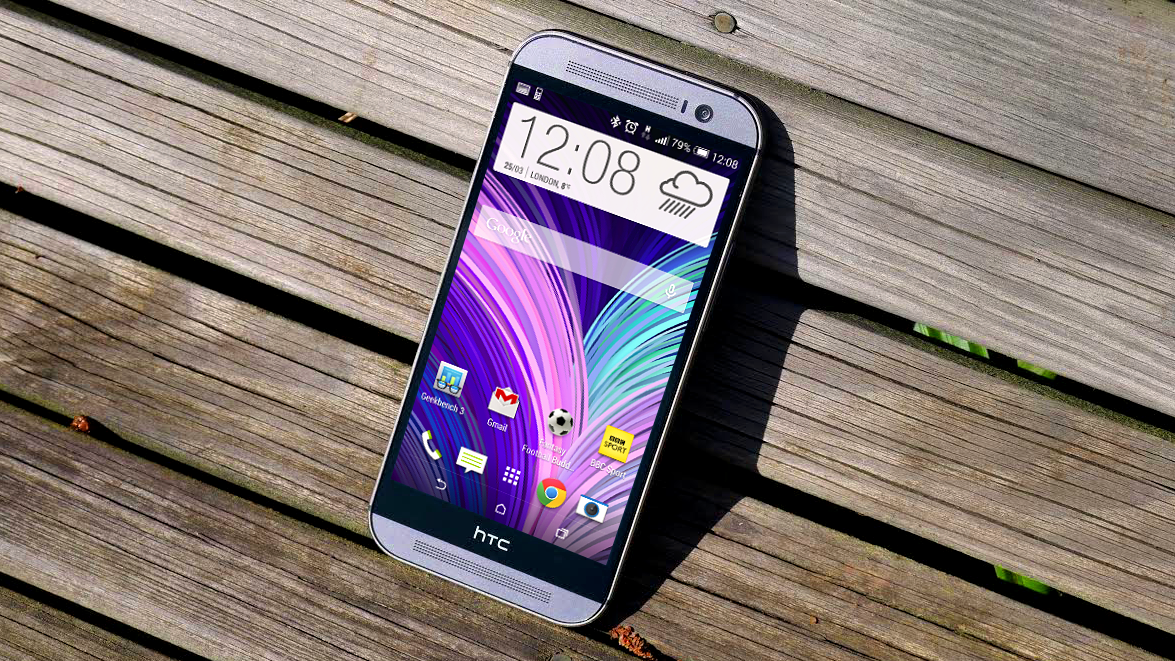Why you can trust TechRadar
If there was one glaring problem with the original HTC One, it was the battery life. This was hardly a surprise, given HTC's smartphones are notoriously hard on the power packs and often under-powered when it comes to the amount of juice on offer as well.
To that end, HTC is still ploughing the same furrow, but thanks mostly to Qualcomm's efficient Snapdragon 801 chipset, the battery life is much, much better.
When I spoke to HTC, one of the first things I asked was why the company had decided to stick with a smaller power pack (2600mAh when most competitors are heading north of 3000mAh) when the need for more power was probably its greatest issue.
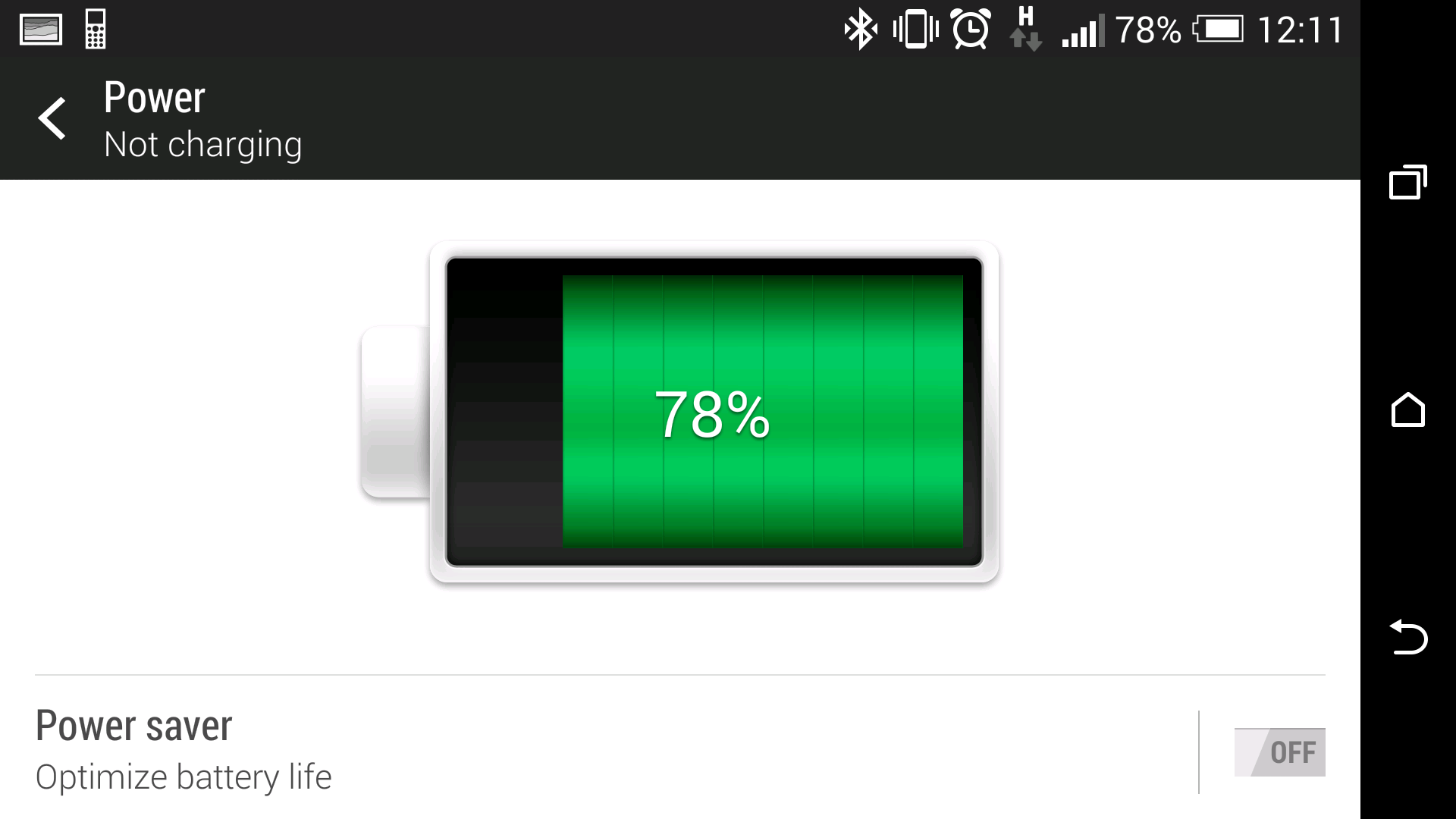
The response was that it's not always necessary to have loads of power if you can be efficient with what you've got, and that's what's happened here. The brand is claiming that it's managed to pull 40% longer battery life with the One M8 compared with last year's model, and that claim seems to hold water.
The pixels on the screen are the same as last year, the processor is faster but backed up by a more powerful GPU, and Sense 6 is apparently a little kinder on the juice than previously.
In testing, I was really happy with the battery life of the HTC One M8 for a number of reasons. Firstly, firing the screen didn't seem to drain the battery percentage as much as before - the review handset of the HTC One that I tried last year would drop nearly 35% on the commute into work if I watched a film, listened to music and browsed emails / apps before getting to the office.
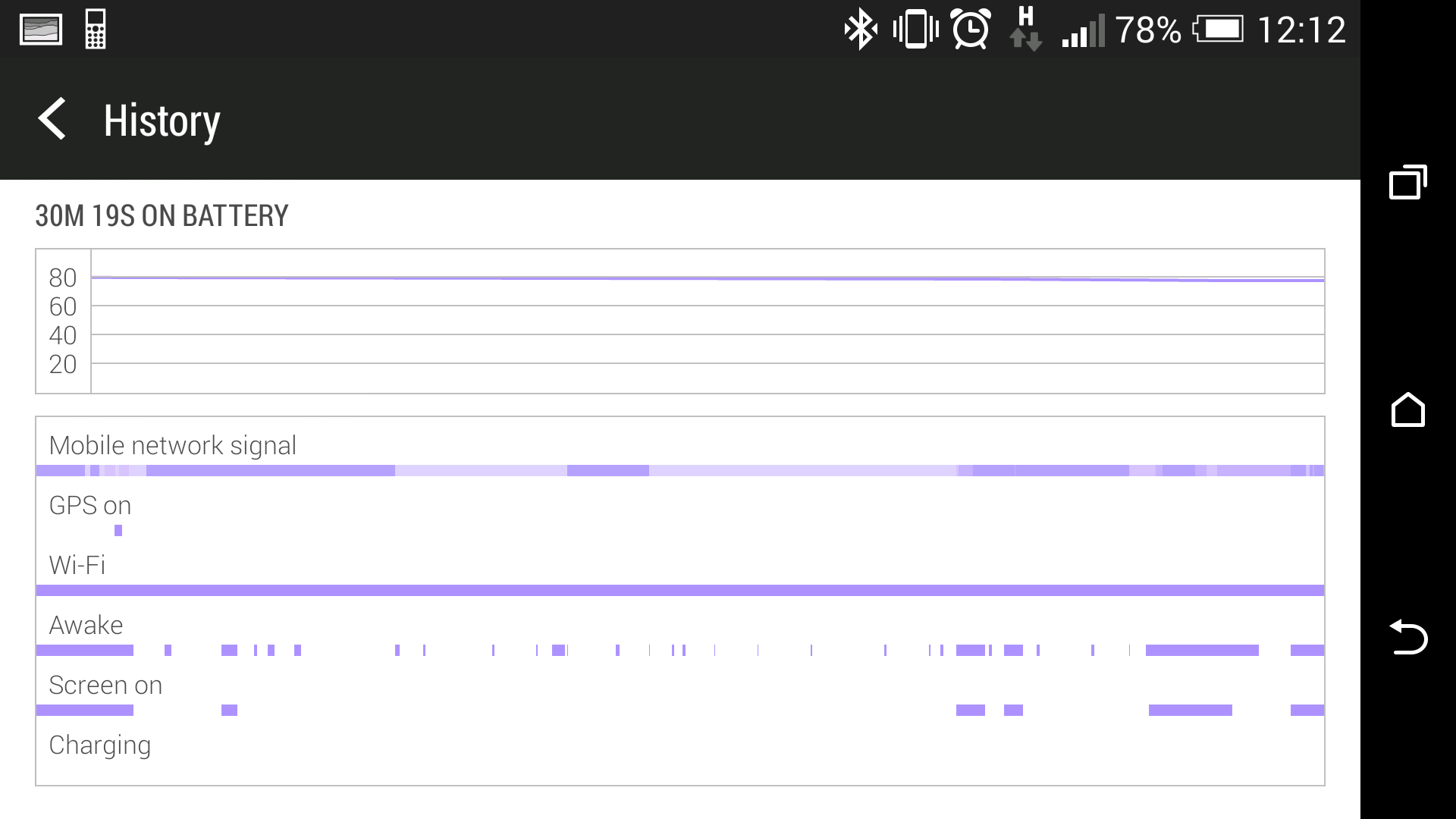
The One M8 can do the same thing but barely break the 10-15% barrier, which is better than the Samsung Galaxy S4 managed, and is more than decent in my eyes. It should be noted that HTC improved the battery life of the original One over the course of the year, but it's still nowhere near this model.
That said, the battery life isn't as amazing as I think it could be - the Samsung Galaxy S5 and Sony Xperia Z2 are better at longevity in the battery stakes thanks to more powerful optimisation and bigger capacity. The HTC One M8 only managed a 77% in our looped video battery test, which is rather average - however, in real time use, it's much better at sipping power.
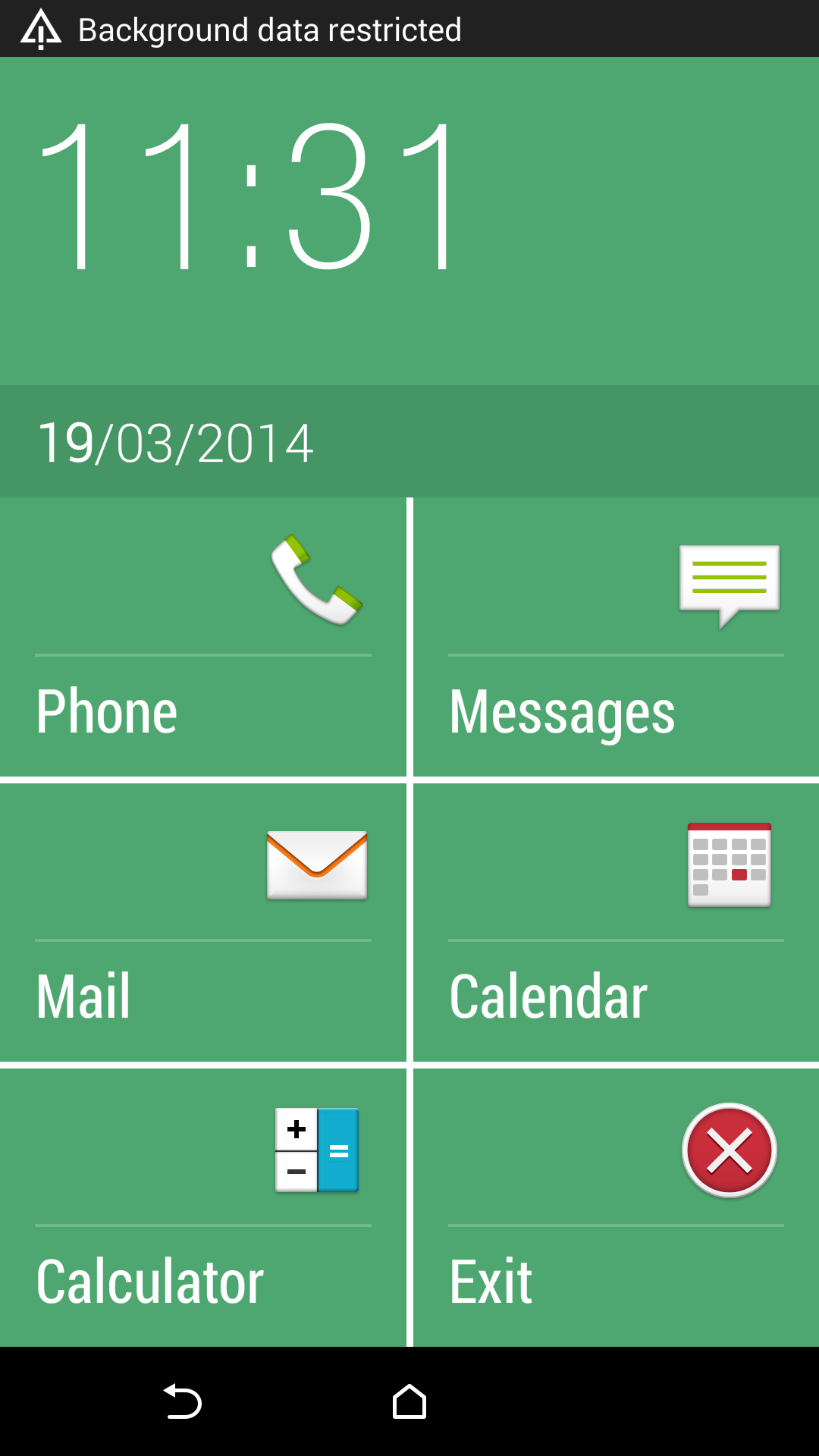
For instance, a one hour run with the screen fired at all times to keep track of the GPS fitness app showed only a 10% drop in battery life, which is better than I expected - turn the screen off and leave it in a pocket or on a desk and it will last for hours.
The other thing that harms the power on the One M8 is still gaming - use this thing for an hour of something graphically intensive, like Real Racing 3, and you'll easily pull about 40% battery life and end up with a pretty toasty phone.
This is more to do with the integration of Android games into a variety of different hardware, but still irks given you'd hope to be completely wire free most days if you weren't near a charging port.
I'd wager you'd easily get two days' medium usage (checking emails, using apps but not playing games or watching movies) if you were thinking of getting this as a business phone - although that would negate a lot of the strong points that the One M8 has to offer.
The other thing HTC has offered up when it comes to battery life is Extreme Power Saving Mode, which sits somewhere between Samsung's Ultra Power Saving Mode (wait a minute...) and Sony's Stamina mode on its phones.
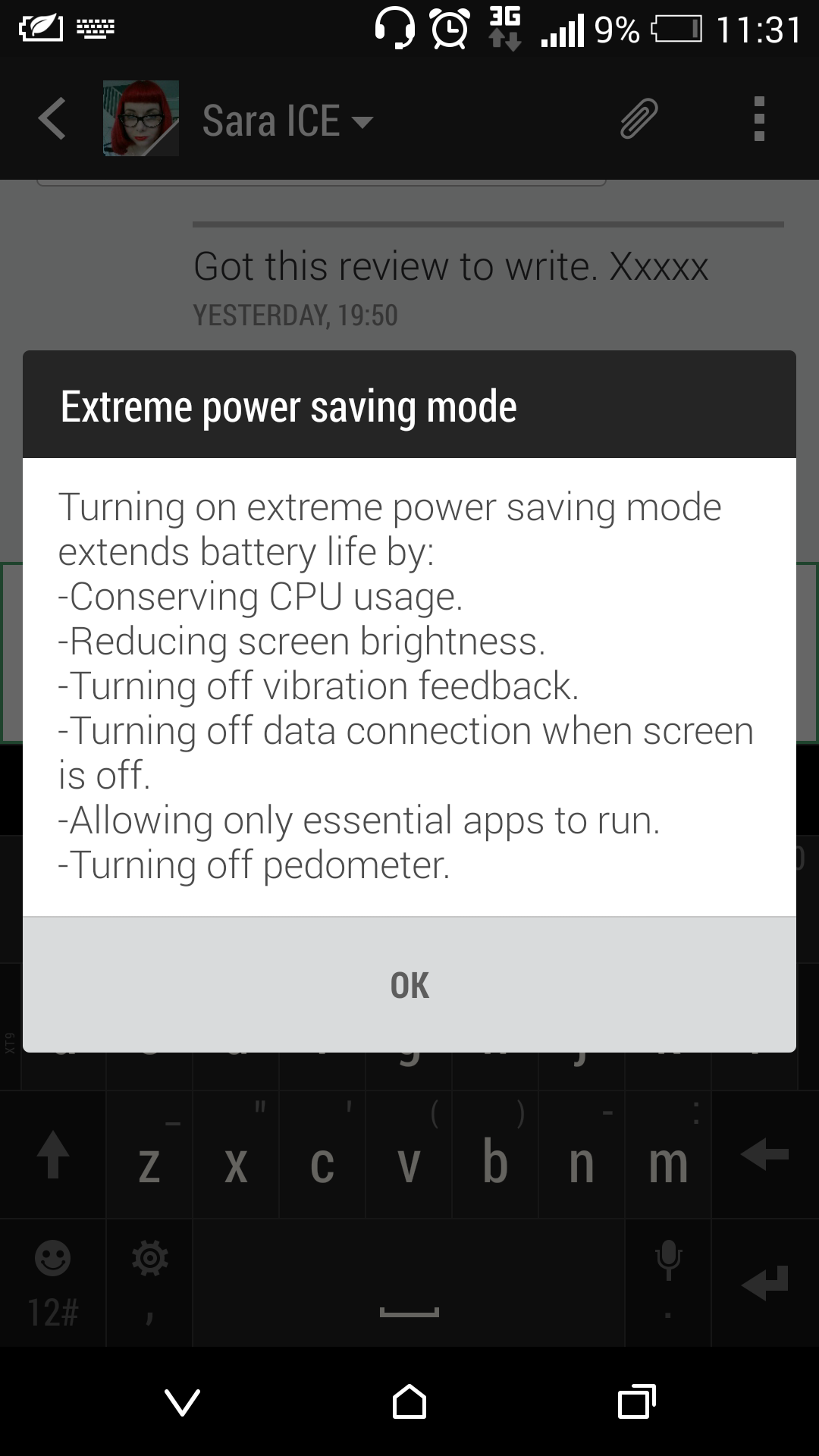
Essentially HTC's option limits your apps to just the phone, messages, mail (although not the Gmail app), calendar and bizarrely the calculator. You can set it any time you like, but it will automatically kick in at 5%, 10% or 20% depending on your preference.
Obviously the rest of the functions are cut right down too - the screen dims, the haptics are disengaged (so no buzzing under the finger) and background data is restricted to the important things only.
But here's the key question: does it really allow you to save power? HTC reckons you can get 15 hours off 5% battery life with this mode, which I consider really optimistic.
The problem seems to be momentum of power drain - if you're watching movies or playing games and hit the Extreme Power Saver Mode limit, the One M8 doesn't seem to slow down much on battery discharge. I left the phone in the pocket at 5% and 20 minutes later saw it was down to 3% and still rather warm. Leaving the phone alone on the desk stretches this out massively, but it does this even in normal mode.
Putting the One M8 into EPSM overnight saw just a 1% drop in power, which means it's probably better suited for those that plan ahead with their battery rather than in times of emergency.
My overall take on the HTC One M8's batter power is a mixed bag – there's no doubt that over time, adding more apps and so on, the drain will start to creep up. It's still miles better than last year's model, but there were times when it would happily drain 5% per hour without doing a huge amount – but then most others, that drop was down to 1-2%.
That said, use it from the word go and you could probably get nearly a week of battery out of the HTC One M8... that's a festival phone for those that aren't worried about being robbed or losing an expensive handset right there.

Gareth has been part of the consumer technology world in a career spanning three decades. He started life as a staff writer on the fledgling TechRadar, and has grew with the site (primarily as phones, tablets and wearables editor) until becoming Global Editor in Chief in 2018. Gareth has written over 4,000 articles for TechRadar, has contributed expert insight to a number of other publications, chaired panels on zeitgeist technologies, presented at the Gadget Show Live as well as representing the brand on TV and radio for multiple channels including Sky, BBC, ITV and Al-Jazeera. Passionate about fitness, he can bore anyone rigid about stress management, sleep tracking, heart rate variance as well as bemoaning something about the latest iPhone, Galaxy or OLED TV.
